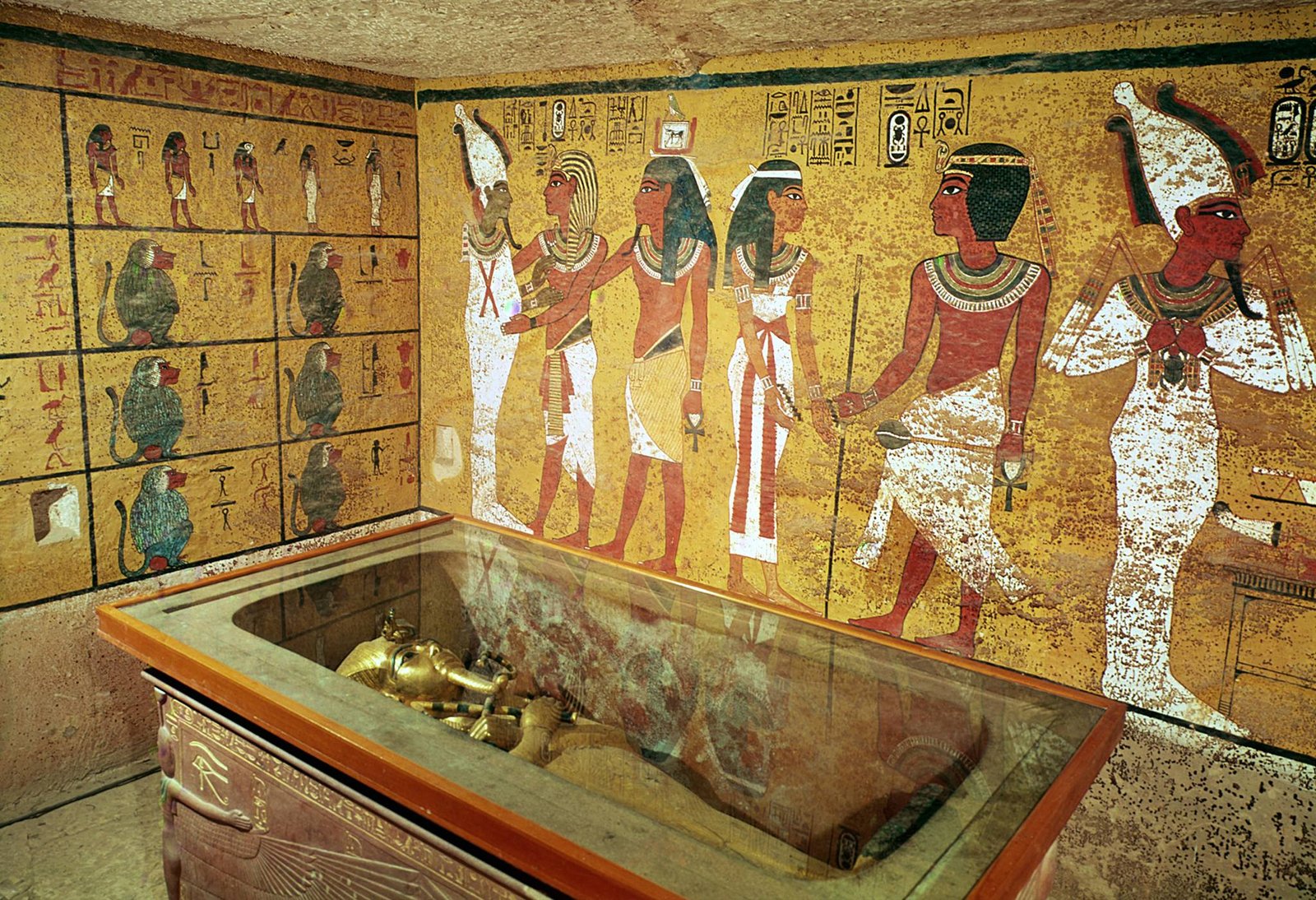The tomb of Egyptian Pharaoh Thutmose II has been discovered in the Valley of the Kings, marking the first such find since Tutankhamun’s tomb in 1922.
The recent discovery of the tomb of Egyptian Pharaoh Thutmose II marks a significant event in Egyptology. This is the first pharaoh’s tomb found since the discovery of Tutankhamun’s tomb in 1922. The tomb was discovered by a joint mission of the New Kingdom Research Foundation, a British independent academic foundation, and the Egyptian Ministry of Tourism and Antiquities. The project is affiliated with the McDonald Institute for Archaeological Research at the University of Cambridge.
Dr. Piers Litherland, a British archaeologist, led the mission that made the discovery in the Valley of the Kings. After more than a decade of exploration, Dr. Litherland’s team located a staircase leading to the tomb of Thutmose II, who ruled Egypt from 1493 to 1479 BC.
The Discovery Process
Clearing flood debris from the descending corridor took several months. Initially, the team believed the tomb belonged to a royal wife. However, upon discovering that the burial chamber’s ceiling was decorated with scenes from the Amduat, a religious text reserved for kings, they realized the importance of their discovery. Dr. Litherland described his initial reaction as “extraordinary bewilderment.”
The State of the Tomb
Despite the initial excitement, the tomb was found to be empty. The contents had been deliberately removed due to flooding that occurred shortly after the burial. The tomb’s location beneath a waterfall caused it to flood within approximately six years of the burial. The king’s remains were moved through a subsidiary corridor to another location.
Evidence and Identification
Fragments of alabaster jars, inscribed with the names of Thutmose II and his wife, Queen Hatshepsut, were found during the sifting process. These fragments were likely broken when the tomb was emptied. According to Dr. Litherland, these broken pieces were crucial in identifying the tomb’s owner.
Significance of the Discovery
This discovery sheds light on the location of the tombs of the early 18th dynasty kings. Thutmose II was the husband and half-brother of Hatshepsut, one of Egypt’s most influential female pharaohs, and the father of Thutmose III. According to Dr. Litherland, the tomb of this ancestor of Tutankhamun had remained undiscovered because it was believed to be at the opposite end of the mountain near the Valley of the Kings.
Possible Second Tomb
Mohsen Kamel, the assistant field director, suggested the possibility of a second, potentially intact, tomb of Thutmose II. The artifacts found are the first objects to be found associated with Thutmose II’s burial.
Background on Thutmose II
Thutmose II ruled Egypt approximately 3,500 years ago. His reign is believed to have lasted for about 14 years, from 1493 to 1479 BCE. He is well-known as the husband of Queen Hatshepsut, one of the few women to rule Egypt as a pharaoh. He fathered Thutmose III, who also became a significant ruler of Egypt.
The Valley of the Kings
The Valley of the Kings, located on the West Bank of Luxor (ancient Thebes), served as the burial site for many pharaohs of the New Kingdom (c. 1550-1070 BCE). Its remote location was chosen to protect the tombs and their treasures from grave robbers. Despite these efforts, many tombs were looted in antiquity, including the original tomb of Thutmose II.
Objects Recovered
The recovered objects include fragments of alabaster jars, which were used to store perfumes, oils, and ointments. These jars bear inscriptions with the name of Pharaoh Thutmose II, and inscriptions bearing the name of his wife Queen Hatshepsut.
The Importance of Funeral Furniture
For the first time, funeral furniture belonging to the pharaoh was found. Before this discovery, no funeral furniture of Thutmose II existed in any museum worldwide, according to Egypt’s Ministry of Tourism and Antiquities.
Further Exploration
Dr. Litherland’s team has a general idea of where the second tomb might be located, suggesting the possibility of finding it still intact with its treasures. This discovery marks the culmination of over 12 years of work by the joint team from Dr. Litherland’s New Kingdom Research Foundation and Egypt’s Ministry of Tourism and Antiquities.
Sources: https://www.theguardian.com/world/2025/feb/19/first-new-pharaohs-tomb-to-be-found-in-over-a-century-discovered-in-egypt
https://news.sky.com/story/tomb-of-egyptian-pharaoh-found-in-remarkable-discovery-the-first-since-tutankhamun-13312871
https://www.bbc.co.uk/news/articles/c5ym30v356po
